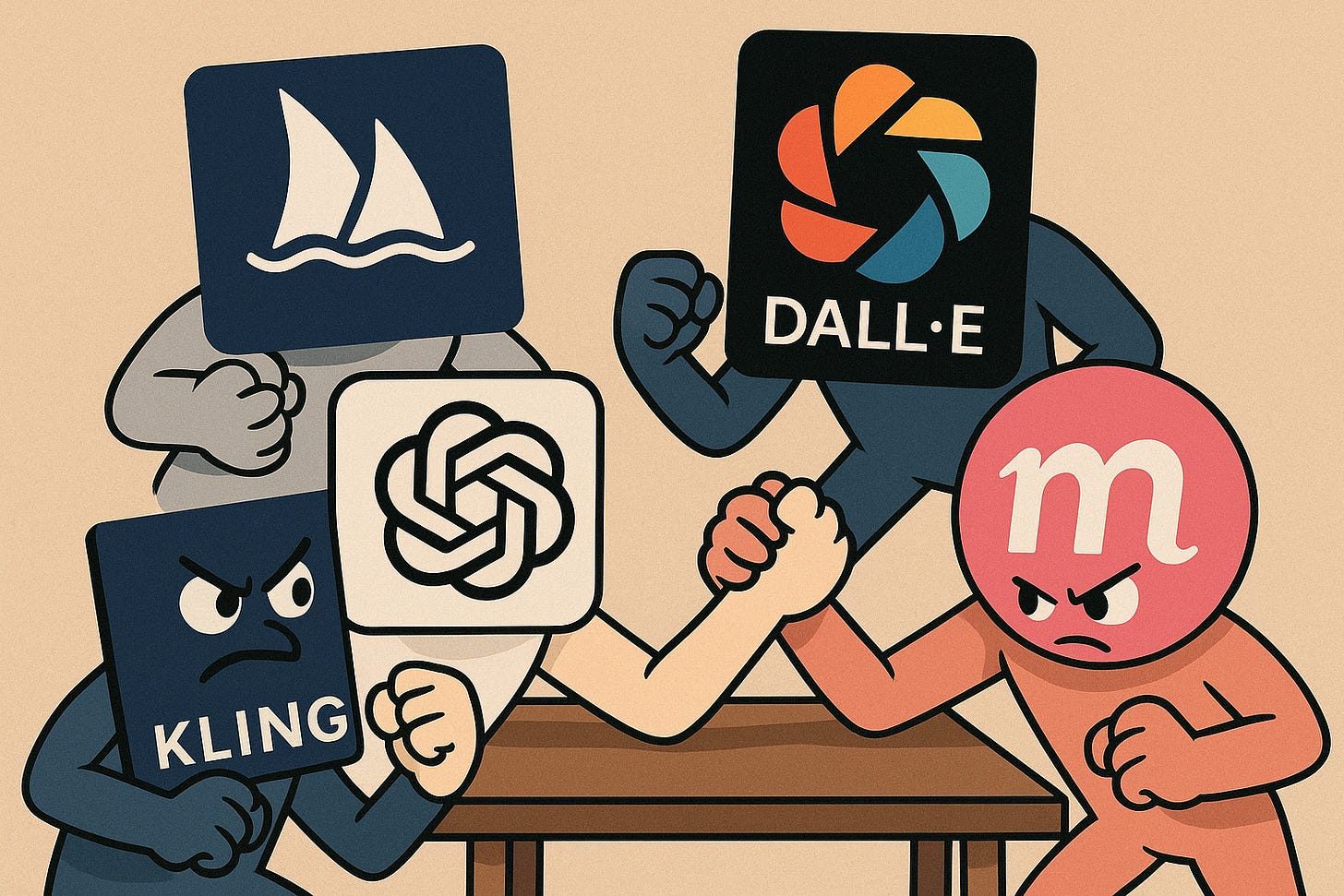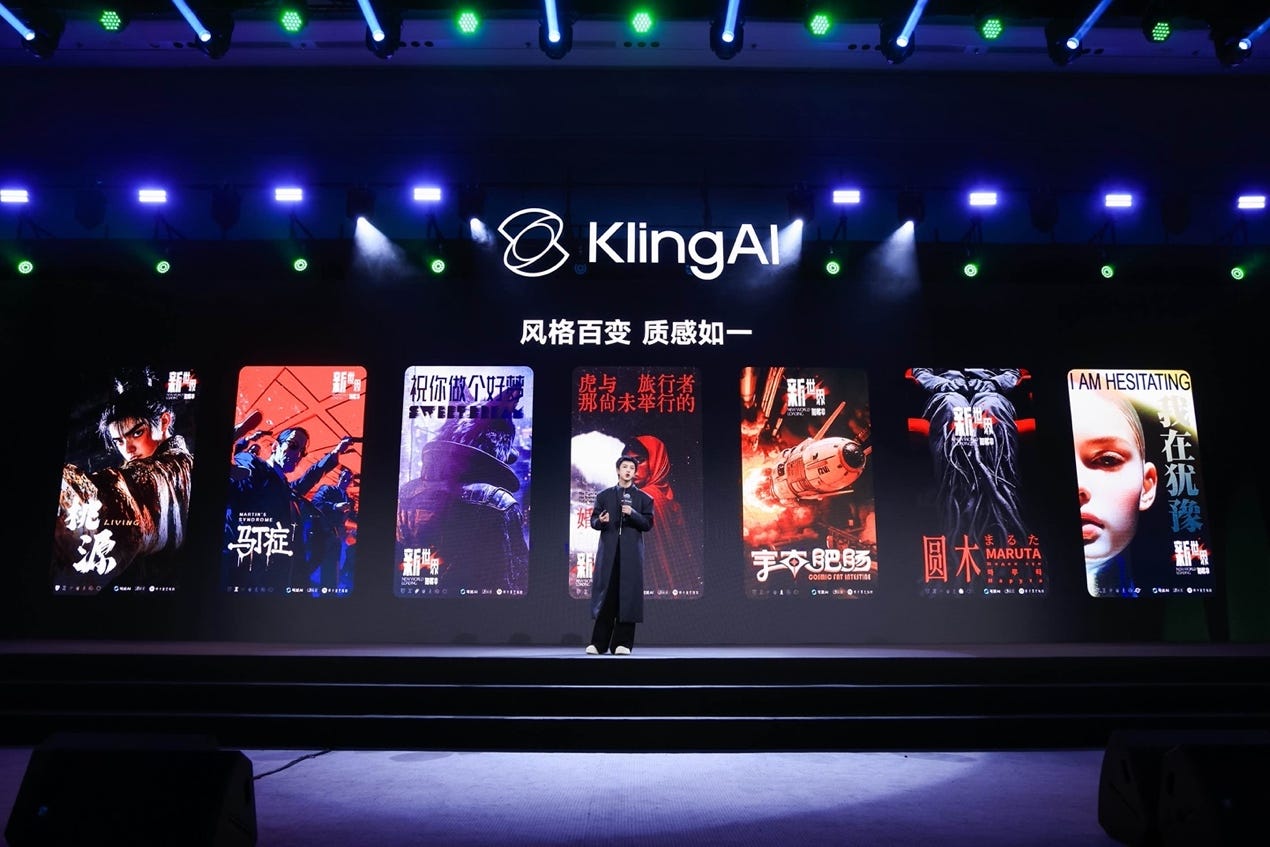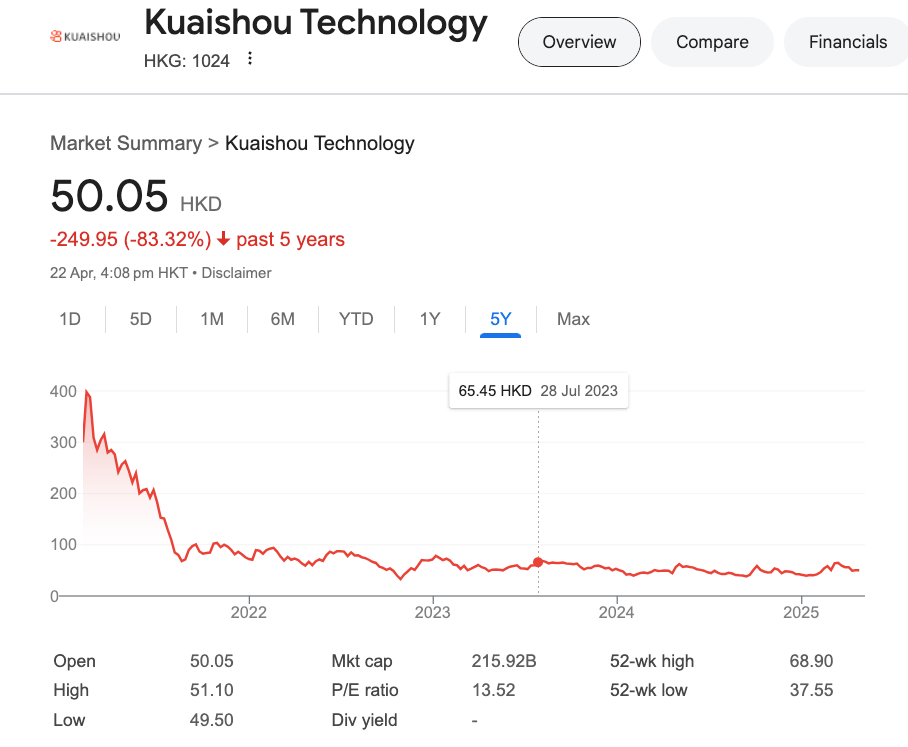The Ghibli Hype: Next Frontier is in Video & Introducing China’s Leading AI Video App, Kling
AI for Creatives is about quality over quantity, & Kuaishou leading in text-to-video globally
Last week, design software maker Figma submitted paperwork to the U.S. Securities and Exchange Commission for an initial public offering. This comes just over a year after it uncoupled from Adobe, following a public courtship of $20 billion, largely due to concerns about monopoly and regulatory controls.
This has brought to my attention the rise of creative tools that have been receiving tremendous attention since the integration of AI. With Canvas being obviously at the forefront of adoption as an incumbent and new challengers like Midjourney and OpenAI empowered Dall-E in the West, and in the Chinese market, there is an increasing number of players in this space too, with ByteDance’s Dreamina (CapCut), Kuaishou’s Kling, and Meitu being strong contenders fighting for the preference of creatives.
And not to go unnoticed, OpenAI officially launched the image generation feature of GPT-4o in late March, which led to a flood of Ghibli-style images on social media. And Google launched Veo 2, which can generate high-quality video content based on text prompts, supporting 4K resolution and a variety of cinematic lens effects. In addition, Google released Gemini Flash 2.0 Image Generation, which also integrates an autoregressive model, significantly enhancing the usability of the model. The AI for Creative space is getting flooded with cool new tools and is setting itself up to be the next frontier technology.
[In this article, we will focus on the business of AI for Creatives, but I do want to note that the lack of regulations around image compliance and fake videos should be discussed, especially as we see text-to-video/image capabilities becoming more advanced by the day. If any safety/policy experts read this and are interested in contributing to AI Proem, please get in touch.]
China’s Creative AI Space
A closer look at China’s first choice for creative AI adoption reveals a space that has been extremely competitive. Just this past week, Kuaishou released Kling AI 2.0 globally, which includes a new video model and an image generation model. Kling’s multi-modal visual language editing capabilities enable users to input ideas through text, images, and other formats. Based on Jefferies’ report, image-generated video accounts for about 85% of Kling AI video creation, and over 15,000 developers and business clients worldwide are already using Kling’s API in different industry scenarios, generating 12 million images and over 40 million videos to date.
Following suit, Alibaba also released its latest open-source video generation model, Wan 2.1-FLF2V-14B, which is designed to simplify video content creation by accepting input of start and end frames. Creators can now develop their own AI models and applications at no cost and create short videos (5-seconds) at 720p resolution for free on the official website.
The big tech companies all have some form of a tool that they are trying to develop in the text-to-image/text-to-video space, from ByteDance’s Dreamina to Baidu’s Ernie, which is also attempting to do this in some capacity, as well as a handful of startups that are emerging. But the clear market leader right now is Kuaishou’s Kling.
We’ve previously compiled a list of Made in China AI apps, which you can reference.
A focused monetization strategy: quality over quantity
However, whether it’s Kling or Midjourney, their ultimate user isn’t just the average knowledge worker, nor is it the average consumer. Unlike Yuanbao and Doubao, which adopt a consumer-facing approach, trying to catch them all. Creative AI tools are really focused on enhancing the workflow for professionals, and there are two main reasons for this. I spoke with the China market head of a stealth AI company in this field, and he explained the economics to me in the following manner.
Most users of these tools are advertising professionals, digital creatives, architects, designers, and so on. Although the base may not be huge in sheer numbers, they are willing to pay out of their own pocket if it means increasing their productivity.
Unit Economics
Whether it is his stealth AI or is it Kling (Kuaishou) or Dreamina (ByteDance) in this lane, a key difference in AI diffusion and monetization that sets it apart from the internet era is the unit economics. The logic is like this: the cost of maintaining a service for 1 or 100 users is the same for an internet product. But, the cost of providing services for 1 or 100 users in the AI world means it is quite literally 1x or 100x more. So companies need to figure out how to actually get their bang for their buck on each user, not just boost the sheer DAU number.
This also largely aligns with our analyses of the enterprise space, where vertical industry know-how is more valuable than overall market size.
The video content industry is extremely commercialized and has a mature business model. According to industry estimates, ByteDance (the entire company, not just TikTok and Douyin) generated 400-500 billion RMB in ad revenue (~65 billion USD). This indicates there is a substantial demand for content advertising and an existing substantial market. Think about it, that’s ByteDance alone. Even if it’s a few percentage points of that market, it can still be a huge business.
For users, it's all about efficiency and achieving the same revenue with lower production costs. And AI companies like them will not help sort out ad placements, but the content creation cost segment is extremely price-sensitive.
Performance Marketing
For example, say if you can cut costs from $1.9 per 10-second video to $1.5 per 10-second video (even that small of a difference), that will make them want to make the switch. The user is a prosumer who will pay for the service and then produce something new with it. You can be either a company’s own marketing department or an agency that represents them.
He added that, in a market like China’s, most companies prioritize performance marketing, meaning they are concerned with the value or, in some cases, user conversion they can achieve when they pay for an ad, rather than focusing on brand value or creative aspects. So, that market is still huge in China. Ultimately, it’s not about the DAU of users, but the potential market size.
There seems to be a sense that the AI monetization strategy is becoming clearer, especially for specific industry cases. For creative-focused tools, it’s professional vertical adoption. The sheer number of DAU/MAU may not be high, but the price paid by a willing customer could still be quite large. And, look, the logic is that even a small percentage of the overall digital ad space market can be a good enough business.
According to Statista, ad spending in the Advertising market in China is forecasted to reach USD 251.91 billion in 2025, with Search Advertising accounting for the largest market volume of USD 69.38 billion in 2025. Specifically, in the Chinese advertising market, 89% of total ad spending is expected to come from digital sources by 2030. In comparison to the U.S., it is expected to lead in ad spending, reaching US$455.93 billion in 2025.
Zooming in on Kuaishou’s Kling
ByteDance’s China short-video app, Douyin, primarily captured the domestic first-tier and second-tier cities. Its biggest competitor is Kuaishou domestically, which is traditionally the most popular short-video app in third-tier and fourth-tier cities.
Kling, super charging Kuaishou’s AI
But in just this past year, Kuaishou’s AI-driven video creation app, Kling, has really come out on top. It distinguishes itself in the competitive generative AI landscape through a multi-modal strategy that integrates advanced algorithms, extensive data resources, and targeted investments.
Central to its technological edge is the refinement and upgrade of large-scale models, particularly focusing on a Mixture of Experts (MoE) architecture that reduces parameter size and operational costs while maintaining performance. This approach enables Kling to deliver high-quality video generation with greater efficiency. (However, I’ve also heard rumors that their model training requirements are much less stringent compared to other companies, so it has had the advantage of just dumping all sorts of video content into training.)
On the commercial front, Kling leads the domestic market in AI revenue monetization among native apps by lowering barriers for content creators and seamlessly integrating AI capabilities with advertisers and merchants. By focusing on not just producing more AIGC but also enhancing both the quality and quantity of AI-generated content (AIGC), it has been able to contribute to the whole ecosystem. But that said, a side comment - the future of regulations around AIGC is still very unclear and could lead to potential safety concerns for us all.
Similar to other consumer-facing apps that we have explored, Kling’s business model also incorporates subscription and value-added service charges. Notably, it is diversified across three primary revenue streams: consumer subscriptions (ToC), API services, and customized solutions tailored for both domestic and international clients. This multi-pronged approach is to support scalable growth and broad market penetration.
Much like Meta and ByteDance, the platform has also used AI to enhance its recommendation capabilities and thus has driven user engagement by delivering more targeted content recommendations, as announced in its recent earnings results. In turn, it increases the daily time users spend on the app.
Financials
Based on Jefferies’ March report on Kuaishou’s earnings, from a financial perspective, capital expenditures related to Kling are expected to remain manageable in 2025, as significant investments were made in 2023 and 2024. The focus for 2025 will shift toward inference costs, which the company plans to optimize through operational innovations and better resource utilization. R&D spending is projected to rise, following peers, driven by increased talent recruitment to sustain continuous improvements in model quality and product features.
However, Kling could now be a turning point for Kuaishou. It represents a cornerstone of Kuaishou’s AI strategy, combining technological innovation with a multifaceted business model to drive user engagement and monetization, and leveraging its video content database. This puts Kuaishou back at the forefront of China’s tech companies and potentially positions it as a leading player in the evolving AI video generation sector.
Appendix: Who is Kuaishou?
First, this is not a random company. It is a company with a market cap of ~224 billion HKD (~29 billion USD). Kuaishou Technology is actually China’s first short-video app. It was founded in 2011, before Douyin, which was founded in 2016 (TikTok).
It was co-founded by Su Hua and Cheng Yixiao, and it is listed on the HKEX (HKG: 1024). It is largely known for developing a mobile app for sharing user-generated short videos, a social network, and a video special effects editor. The app is known as Kuaishou in China but Kwai in many countries outside of China. It also has a presence in India, Pakistan, and Indonesia, under the name Snack Video. Although it is publicly listed, it has a majority government-backed shareholder, China Internet Investment Fund, a state-owned enterprise.
Before the anti-monopoly probes in China’s internet sector, the internet was notoriously split up into two camps: one within the Alibaba system, which often benefited from the behemoth’s incubation and financial support, and one within the Tencent camp, which prioritized WeChat and its related services within its offerings. And Kuaishou was a loud and proud Tencent camp player, having received over USD 2 billion in investments from Tencent to compete with ByteDance. While ByteDance remained independent of these two throughout.
Global Ambitions
In 2020, Kuaishou tried to enter the U.S. market with a product called Zynn, but that was just when Trump was forcing TikTok to spin off, and there was that huge PR crisis with the high-profile hire. TikTok brought in Disney executive Kevin Mayer to expand the U.S. market. Still, Mayer quickly exited the company as it was drawn into a series of probes by the Trump administration.
Only a year later, Zynn quietly exited the U.S. market and quickly pivoted its engines towards LATAM and other emerging markets, making it one of the most popular apps in Brazil right now, under a new name. However, whether domestically in China or globally, it never reached the level of success that TikTok did, always hovering in the #2 spot in popularity. In fact, the last few years have been rough, as you can see below. In the company’s Full Year 2024 results, it disclosed 735.6 million MAUs, compared to ByteDance’s ~755 million MAUs in China alone.





Was surprised the article didn't mention Wan or Framebreak. btw, China will win the ai arms race. Here's why: https://www.amazon.com/China-Will-Win-Arms-Race/dp/B0DTYQMQHW